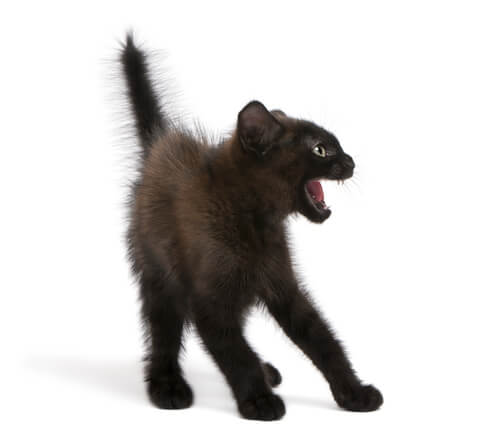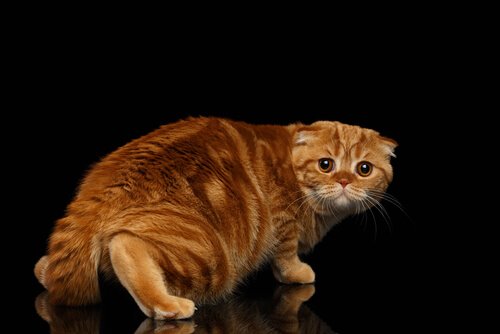Cat Body Language

People often say that cats aren’t very expressive and that they’re better at hiding their feelings, even if they’re sick. However, if you like these animals and pay good attention to them, you’ll quickly learn to interpret them better. Today, you can read this article to learn about cat body language.
Cat body language and communication
Catus felis use several tools to communicate with their peers and other members of the animal kingdom, including humans. Among these sounds are meows, purrs, and hisses.
However, cat body language consists of using use different body parts to express themselves. For example:
- Tail
- Ears
- Eyes
- Whiskers
On the other hand, body posture also conveys information in certain situations. Cats will arch their backs and have their hair stand up if they feel like they’re in danger. In this situation, they may attack or flee.
However, if they put expose their belly, they’re showing you that they trust you, even though they don’t always like to be pet by humans.

In addition to their meows, purrs and other sounds, cats use body language so attentive humans can interpret what they’re trying to say.
Tails say a lot about cats
Everyone knows that dogs use their tails to express themselves. However, cats also use their tails to express their body language. Read examples below:
- Raised and straight: the cat is happy. They may also use it to greet others.
- Hairs pointing up: he may attack to defend himself.
- Low: shows concern or little excitement.
- Between the legs: scared.
- Moving slowly: shows that the cat is focused on something.
- Moving smoothly: shows joy and/or desire to play
- Agitated movements from one side to another: the cat is upset and could bite/scratch
- Rigid and vertical, but with the tip bent to one side: curiosity and interest
- Stiff but moving the tip: a sign of irritability
More information on cat body language
Catus felis also express themselves by using their ears, whiskers and eyes. For example:
- Happy: ears pointing up, relaxed whiskers, calm eyes and dilated pupils when they are exposed to the light.
- Annoyed: ears pointing backward, whiskers forward and small pupils.
- Scared: ears laying down and sideways, whiskers retracted and pupils dilated. If the animals is aggressive or defensive, they’ll open their mouth and show their teeth.
- Lurking around: ears pointing up, whiskers forward and pupils dilated.
- Relaxed: ears raised and eyes half way closed. When a cat is happy, they will be sleepy and purr if you pet him.

On the other hand, during a conflict with another animal, they’ll raise their heads if they feel confident and lower it if they’re aggressive, submissive or scared.
Understanding Felis catus
As if that weren’t enough — and by putting the idea of feline indifference on the side — what cat lovers haven’t come home to give their cat a bunch of affection?
There are kittens who run toward their owners with their tails raised while welcoming them with meows. They rub against their legs, nudge them with their heads or gently nibble on their human.
This display of affection for their owners doesn’t fit their reserved and non-expressive reputation. What do you think? We have to learn how to interpret their different messages. They’ll use several body parts and sound signals to express themselves.
Maybe cats, due to their intuitive ability and great intelligence, distant themselves from those they know don’t love them or don’t pay attention to them. They practically don’t waste their time on people who are non-accepting of them.
This text is provided for informational purposes only and does not replace consultation with a professional. If in doubt, consult your specialist.